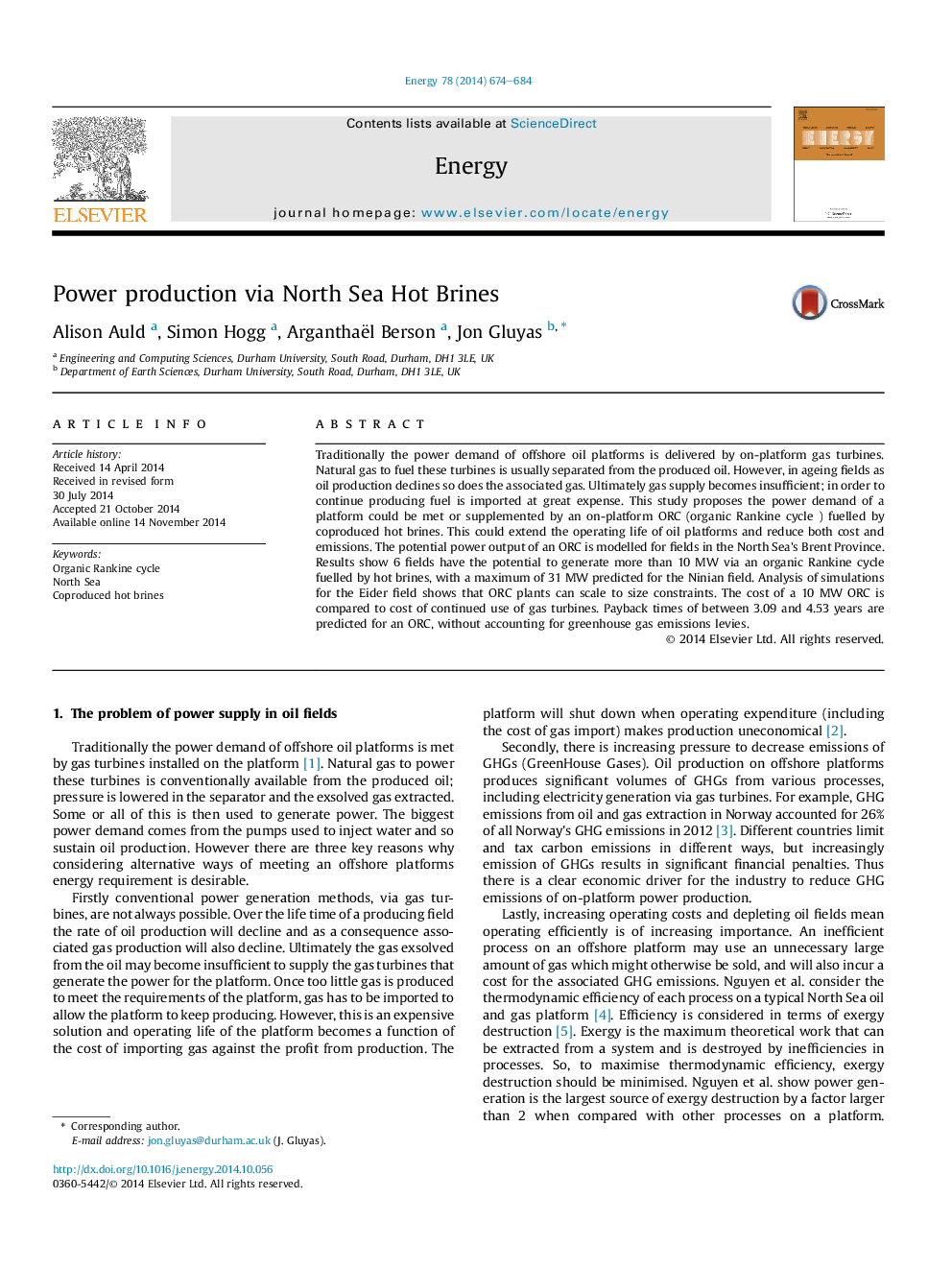| Article ID | Journal | Published Year | Pages | File Type |
|---|---|---|---|---|
| 8076176 | Energy | 2014 | 11 Pages |
Abstract
Traditionally the power demand of offshore oil platforms is delivered by on-platform gas turbines. Natural gas to fuel these turbines is usually separated from the produced oil. However, in ageing fields as oil production declines so does the associated gas. Ultimately gas supply becomes insufficient; in order to continue producing fuel is imported at great expense. This study proposes the power demand of a platform could be met or supplemented by an on-platform ORC (organic Rankine cycle ) fuelled by coproduced hot brines. This could extend the operating life of oil platforms and reduce both cost and emissions. The potential power output of an ORC is modelled for fields in the North Sea's Brent Province. Results show 6 fields have the potential to generate more than 10Â MW via an organic Rankine cycle fuelled by hot brines, with a maximum of 31Â MW predicted for the Ninian field. Analysis of simulations for the Eider field shows that ORC plants can scale to size constraints. The cost of a 10Â MW ORC is compared to cost of continued use of gas turbines. Payback times of between 3.09 and 4.53 years are predicted for an ORC, without accounting for greenhouse gas emissions levies.
Keywords
Related Topics
Physical Sciences and Engineering
Energy
Energy (General)
Authors
Alison Auld, Simon Hogg, Arganthaël Berson, Jon Gluyas,
